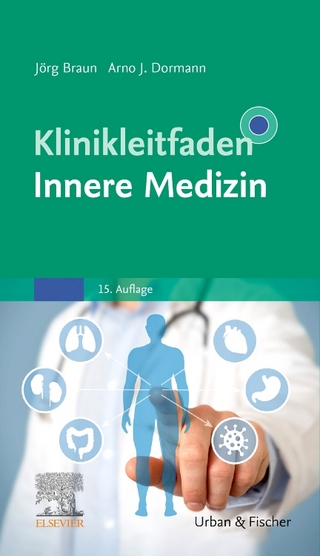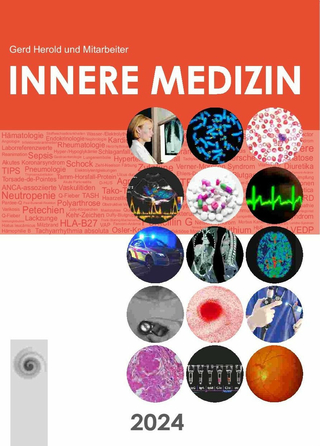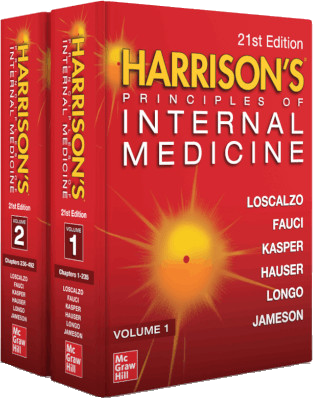
Pocket Guideline of Diabetic Foot
Jaypee Brothers Medical Publishers (Verlag)
978-93-5270-313-5 (ISBN)
This is a pocket guide for all professionals in countries where access to care for diabetic feet is needed. Diabetic foot problems and amputation represent the most important long-term problems of diabetes medically, socially, and economically, and interest in the diabetic foot is therefore steadily increasing.
The management of the diabetic foot disease requires expertise of a wide range of specialists care on modern diabetic foot care and this well-illustrated book provides a comprehensive, update review of medical and surgical aspects of diabetic foot disease.
The practical approach will make this new edition an essential and useful reading tool for all professionals aimed at managing the diabetic foot, It focuses on the key aspects of diagnosis, management, education, and prevention of diabetic foot diseases of patients with diabetes.
Zulfiqarali G Abbas MBBS DTM&H MMed FRCP Consultant Physician, Endocrinologist and Diabetologist; Founder and Chairman, Pan-African Diabetic Foot Study Group; Vice-President, D-Foot; International Executive Member of Infection Committee, International Working Group on the Diabetic Foot (IWGDF), Department of Internal Medicine, Abbas Medical Centre, Muhimbili University of Health and Allied Sciences, Dar es Salaam, Tanzania Arun Bal MS PhD Consultant Diabetic Foot Surgeon, Founder and President, Diabetic Foot Society of India; Department of Diabetic Foot Surgery, Raheja Hospital, Hinduja Hospital, Mumbai, Maharashtra; Visiting Professor, Amrita Institute of Medical Sciences, Kochi, Kerala, India
Section 1: Medical Aspect of Diabetic Foot
1. Diabetes Mellitus—A Clinical Challenge
2. Top Ten Countries for Number of Adults with Diabetes
3. Epidemiology of the Diabetic Foot
4. Economical Burden of the Diabetic Foot Ulcer
5. Pathway to Diabetic Foot Ulcer
6. Factors Associated with Foot Ulcer
7. Pathophysiology of Foot Ulceration
8. Diabetic Peripheral Neuropathy
9. Types of Peripheral Neuropathy
10. Tests for Peripheral Neuropathy
11. Vibration Test
12. Biothesiometer or Neuro-esthesiometer
13. Other Tests for Peripheral Neuropathy
14. Neuropad (Autonomic Test)
15. Neuro-osteoarthropathy (Charcot Foot)
16. Indications for a Neurological Referral in Patients with Suspected Diabetic Sensorimotor Neuropathy
17. Oral Symptomatic Therapies in Painful Diabetic Neuropathy
18. Peripheral Arterial Diseases
19. Stages of Peripheral Arterial Disease
20. Chronic Critical Ischemia
21. Classification of Peripheral Arterial Disease
22. Interpretation of the Ankle-brachial Index
23. Computed Tomography Scan Angiogram of Lower Limbs
24. Transcutaneous Oxygen Monitor
25. Clinical Symptoms of Neuropathic and Ischemic Foot Ulcers
26. Neuroischemic Diabetic Foot (Mixed)
27. Diabetic Foot Infections
28. Risk Factors for Infection
29. Three Most Important Clinical Categories of Infections
30. Cellulitis
31. Deep Soft Tissue Infection
32. Chronic Osteomyelitis
33. Criteria for Diagnosis of Osteomyelitis
34. Typical Features of Diabetic Foot Osteomyelitis on Plain X-rays
35. Classification and Severity of Infection
36. Indications of Worsening Infection
37. Characteristics Suggesting a More Serious Diabetic Foot Infection and Potential Indications for Hospitalization
38. Factors that May Influence Choices of Antibiotics Therapy for Diabetic Foot Infections (Specific Agents, Route of Administration, Duration of Therapy)
39. Factors Potentially Favoring Selecting Either Primarily Antibiotics or Surgical Resection for Diabetic Foot Osteomyelitis
40. Antibiotic Regimens for Mild, Moderate, and Severe Diabetic Foot Infections
41. Duration of Treatment for Infected Diabetic Foot
42. Wagner Classification
43. PEDIS Classification
44. The University of Texas Classification
45. SINDBAD Classification
46. Lower Extremity Threatened Limb Classification System
47. Ischemia: Clinical Category
48. Foot Infection: Clinical Category
49. Simple Staging of the Diabetic Foot
50. Consider the Whole Patient and not the Hole in the Patient to Ensure Effective Care of the Foot Ulcer
51. Foot Examination
52. Ulcer Assessment
53. Wound Bed
54. Examination of Edge, Wall, and Base
55. A Summary of the Management of Diabetic Foot Ulcer
56. Local Wound Treatment
57. Role of Debridement in Ulcer Management
58. Debridement Methods and Its Characteristics
59. Summary of Indications for Different Dressings/Devices
60. Ulcer Healing
61. Surgical Intervention in Severe Cases where Abnormal Pressure Distribution is Causing Persistent and Nonresolvable Ulceration
62. Biomechanics Factors and Footwear
63. Plantar Pressure Reduction
64. Footwear and Offloading for the Diabetic Foot: An Evidence-based Guideline
65. General Guide to Footwear Based on Risk Status
66. Examination of the Insensate Diabetic Foot
67. The Diabetic Foot Ulcers: Outcome and Management
68. Global Burden of Limb Amputation
69. Preventing Diabetic Foot Amputation
70. Nonulcerative Pathology of Ulcers
71. Social Factors of the Diabetic Foot
72. Time is Tissue in the Diabetic Foot
73. Pathway to Clinical Care for Diabetic Foot Ulcer
74. Risk Categorization System
75. How to Prevent Foot Problems
76. Ulcer Prevention
77. Training of Health Care Workers
78. The Step-by-Step Diabetic Foot Project
79. Train the Foot Trainer Project
80. Organization of Foot Care
81. The Minimal Foot Clinic Model
82. Pathway of Refer for Foot Care
83. Tropical Diabetic Hand Syndrome
84. Algorithm for Management of Tropical Diabetic Hand Syndrome
85. Issues—Particular Importance in Developing Countries
Section 2: Surgical Aspect of Diabetic Foot
86. Diabetes Mellitus—Surgical Challenge
87. Team Approach
88. Foot Salvage Surgery
89. Neuropathy and Surgery
90. Charcot Foot
91. Imaging in Charcot Foot
92. Indication for Surgical Treatment
93. Surgical Treatment for Charcot Foot
94. Choice of Surgical Procedures
95. Healing Time in Surgical Treatment of Charcot Foot
96. Complication of Surgical Treatment
97. Peripheral Arterial Disease and Surgery
98. How Peripheral Arterial Disease is Different in Diabetes than Nondiabetic Patients
99. Peripheral Arterial Disease, Transcutaneous Oxygen Pressure, and Surgery
100. Imaging Modalities
101. Selection of Type of Imaging
102. When and How to Treat Foot Gangrene When Revascularization is not Feasible
103. Selection of Type of Revascularization
104. Steps to Prevent Acute Kidney Injury in a Susceptible Patient
105. Use of Non-iodine Based Contrast
106. Post-revascularization Treatment
107. Schedule for Antibiotics is as Follows
108. Post-revascularization Prevention
109. Necrotizing Fasciitis
110. Osteomyelitis
111. The Conservative Treatment of Osteomyelitis
112. Debridement in Patients with Infection and Vasculopathy
113. Conservative Management of Localized Gangrene
114. Factors That Influence Wound Closure Procedure
115. Factors That Retard Healing
116. Commonly Used Procedures within Each Surgical Category
117. Different Types of Dressing
118. Acute Wound Flowchart
119. Chronic Wound Flowchart
120. Skin Grafting in Diabetic Foot
121. Advantages of Split Thickness Skin Graft
122. Local/Regional Anesthesia for Diabetic Foot Surgery
123. Total Contact Cast for Diabetic Foot Patients
124. Advantages of Contact Casting in Diabetic Foot Ulcers
125. Contraindication for Total Contact Casting in Diabetic Foot Ulcers
126. Why Diabetes Patients Gets Bilateral Pedal Edema?
127. Wound Bed Preparation
128. Evolution of Time Frame Work
129. Tissue Management Debridement
130. Selection of Types of Debridement
131. Types of Debridement
132. Callus Debridement in Diabetic Foot
133. Adhesive Felt for Offloading
134. Pressure Relief Gel Pads and Support
135. Deformed but Walkable Diabetic Feet
136. Vacuum-assisted Wound Closure
137. Footwear in Diabetes
138. Footwear Insole
139. Total Contact Orthosis
140. Rocker Outsole
141. Pathology Causing Toe Injuries due to Deformities and Poor Foot Care/Footwear
142. Guidelines for Footwear Prescription in Diabetes
143. Why Early Detection and Treatment of Critical Limb Ischemia
144. Fungal Infection in Diabetic Foot
145. Ten Commandments of Foot Care in Diabetes
Wound Care Mini: Glossary
Further Reading
| Erscheinungsdatum | 10.05.2021 |
|---|---|
| Zusatzinfo | 221 Halftones, color; 17 Illustrations, unspecified |
| Verlagsort | New Delhi |
| Sprache | englisch |
| Maße | 121 x 152 mm |
| Gewicht | 110 g |
| Themenwelt | Medizin / Pharmazie ► Gesundheitsfachberufe ► Kosmetik / Podologie |
| Medizin / Pharmazie ► Gesundheitswesen | |
| Medizinische Fachgebiete ► Innere Medizin ► Diabetologie | |
| Medizinische Fachgebiete ► Innere Medizin ► Endokrinologie | |
| ISBN-10 | 93-5270-313-8 / 9352703138 |
| ISBN-13 | 978-93-5270-313-5 / 9789352703135 |
| Zustand | Neuware |
| Haben Sie eine Frage zum Produkt? |
aus dem Bereich


